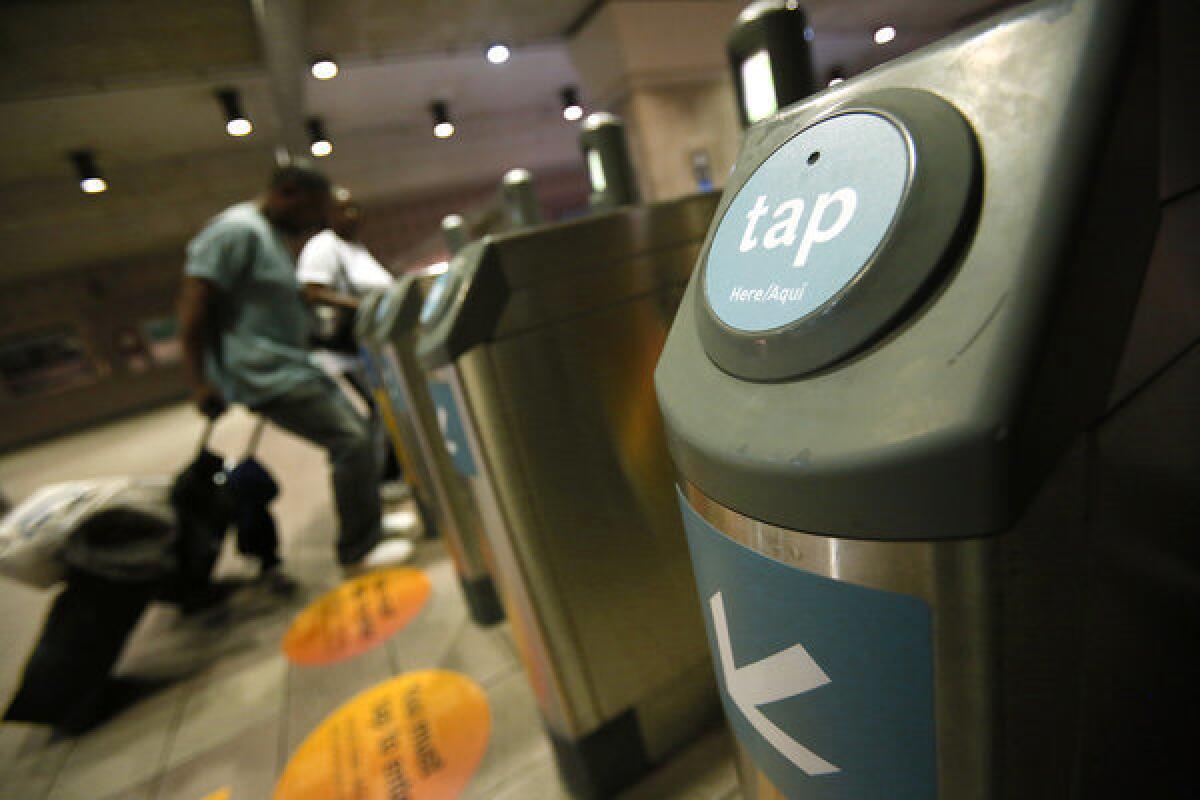Doing away with Metro rail honor system is common sense

- Share via
Los Angeles’ Metro rail system has finally grown up, so it should be no surprise that it would start treating Angelenos like transit adults and demand that riders pay a fare (and make up to $9 million annually in the process).
Starting today, the Los Angeles County Metropolitican Transportation Authority is finally beginning to phase out its well-meaning but financially flawed honor system (I can only imagine what New Yorkers thought of that), which practically invites fare evaders to take a free ride. At downtown’s Union Station, all turnstiles leading to Purple and Red line subway trains are now locked. The 15 other Red and Purple line subway stations will probably have their turnstiles locked by the end of the summer. Eventually, Metro expects to lock the gates at half of its existing 81 rail stations. (Not all stations are wide enough to accommodate latched turnstiles.)
In other words, Metro will start expecting riders to prove they actually paid the $1.50 fare before boarding a train.
Riders who don’t pay face a $250 fine if caught. And at stations that will go without locked turnstiles, Metro will continue a crackdown on fare evaders that it started in the last few months. The Daily News reported that, in January, Metro found as many “free entry” riders as TAP riders in its Wilshire/Normandie station.
To be fair, the honor system started with good intentions. In May, the New York Times reported:
“One reason the subways did not include turnstiles was that transit planners thought locked gates would make it even harder to persuade Los Angeles residents to dip their toes into the mass transit water. That no longer seems to be a cause of concern: In March, [Metro] logged an average of 360,000 rides a day on the subway system.
“The system opened in 1993 with 4.5 miles of underground tracks and five stations. Now, the entire system — including subways and light rail — spans nearly 88 miles and contains 101 stations, stretching from Long Beach to Pasadena.”
As the Metro rail system expands further to the Westside, there will, again, be a need to attract new riders. But with a more developed system than the one in 1993, there are better ways to accomplish this. Metro could, for example, introduce a short trial period where new riders could test the rail for free, as a teaser to begin paying regularly for it.
And, as a colleague pointed out, forcing people to pay could actually improve rider retention. Giving up $1.50 per ride could serve as an investment into mass transit, which, in turn, will hopefully translate into a stronger connection between the rider and the system. Riders will care more about mass transit if they have to pay.
It’s difficult to understand why this change hasn’t been made already. If given the option to slip onto a train without paying a fare, there will inevitably be evaders. Some may call that cynical. I call that common sense.
ALSO:
Goldberg: Snowden a fool, not a spy
Was adopting Common Core a mistake?
UC and Native Americans: Unsettled remains
Twitter: @danielrothberg
More to Read
A cure for the common opinion
Get thought-provoking perspectives with our weekly newsletter.
You may occasionally receive promotional content from the Los Angeles Times.






